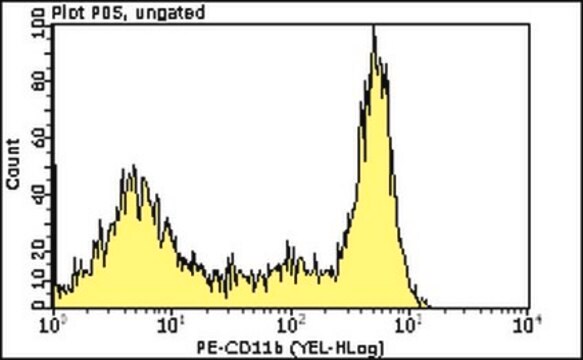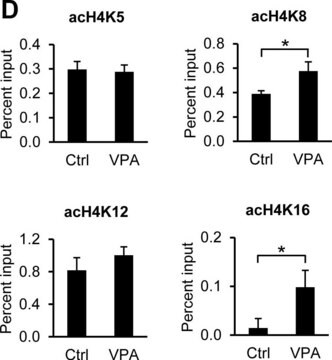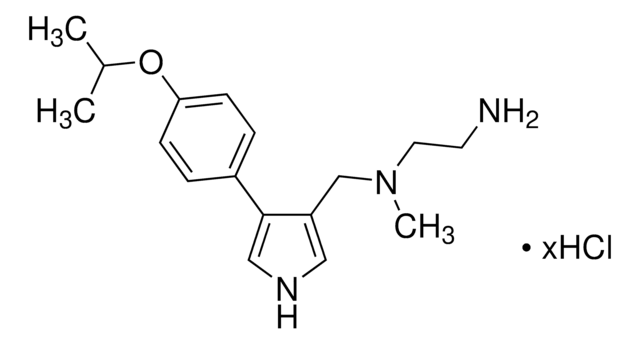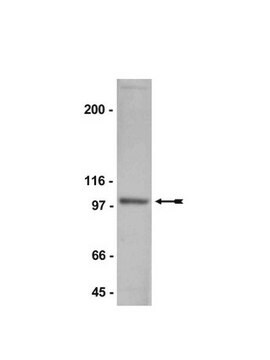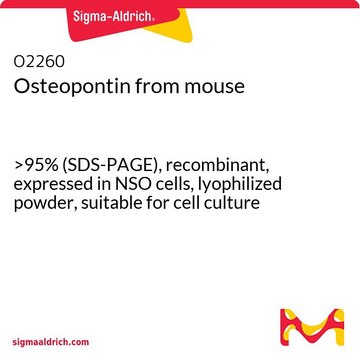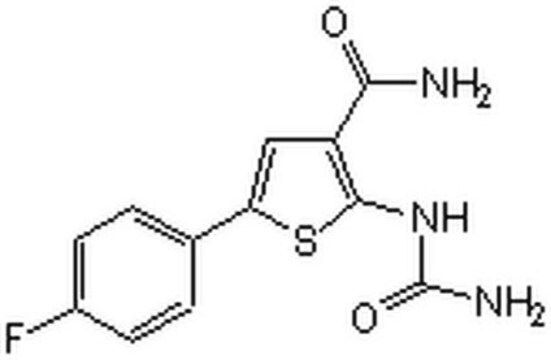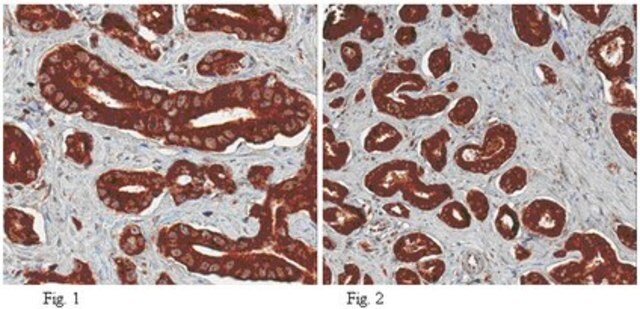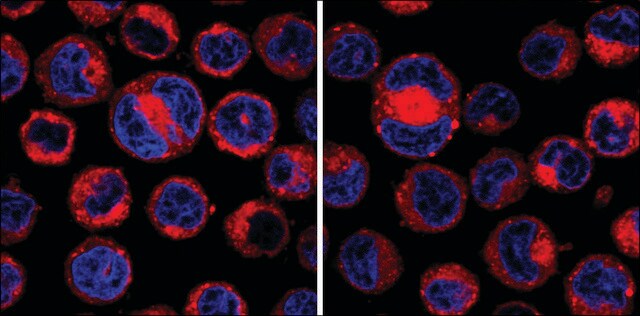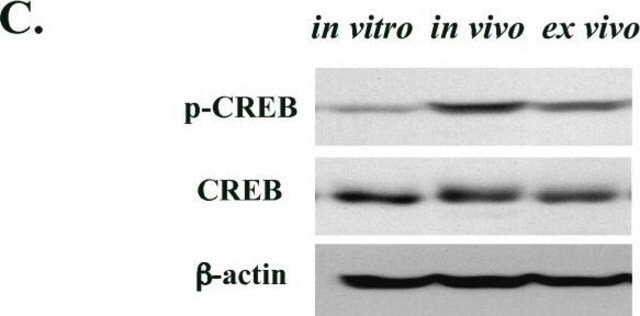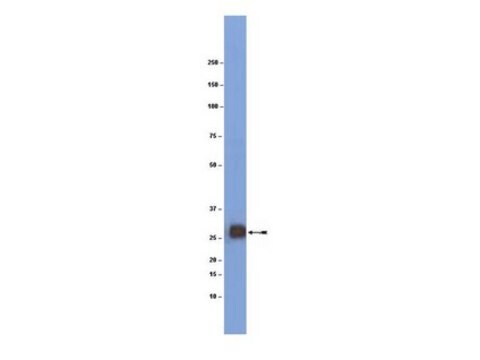499260
Osteopontin, His•Tag®, Mouse, Recombinant, Mouse
Sinonimo/i:
rmOPN
Autenticatiper visualizzare i prezzi riservati alla tua organizzazione & contrattuali
About This Item
Codice UNSPSC:
12352202
NACRES:
NA.45
Prodotti consigliati
Saggio
≥95% (SDS-PAGE)
Livello qualitativo
Stato
lyophilized
Produttore/marchio commerciale
Calbiochem®
Condizioni di stoccaggio
OK to freeze
Impurezze
≤100 pg/μg Endotoxins (pg/μg rmOPN)
Condizioni di spedizione
ambient
Temperatura di conservazione
−70°C
Descrizione generale
M.W. 65,000 and 30,000 under reducing conditions.
Recombinant, mouse osteopontin fused at the C-terminus to a His•Tag sequence and expressed in NSO-derived Leu17-Asn294 (Glu99Gly) murine myeloma cells. A secreted, highly acidic, calcium-binding, RGD-containing, phosphorylated glycoprotein. Osteopontin is expressed in several cell types including macrophages, fibroblasts, epithelial cells, T cells and osteoclasts in response to activation by cytokines, growth factors or inflammatory mediators. Mouse OPN cDNA encodes a 294 amino acid protein that has a 16 amino acid predicted signal peptide, which is cleaved to generate 278 amino acid mature protein. The mature protein contains an integrin binding arginine-glycine-aspartic acid (RGD) sequence. Exhibits some renoprotective actions in renal injury, such as increasing tolerance to acute ischemia, inhibiting inducible nitric oxide synthase, and reducing cell peroxide levels.
Azioni biochim/fisiol
~200 ng immobilized osteopontin/well will mediate the adhesion of ≥25% of the 293 cells plated at 10⁵ cells/well
Attenzione
Toxicity: Standard Handling (A)
Stato fisico
Lyophilized from 0.2 µm sterile-filtered PBS, 50 µg BSA/µg rmOPN.
Ricostituzione
Following reconstitution, aliquot and freeze (-70°C). Stock solutions are stable for up to 1 month at 4°C and for up to 3 months at -70°C. Avoid freeze/thaw cycles of stock solutions.
Reconstitute to ≥100 µg/ml with sterile PBS.
Altre note
Xie, Y., et al. 2001. Kidney Int.60, 1645.
Chiba, S., et al. 2000. Microbiol. Immunol. 44, 319.
Miyazaki, Y., et al. 1990. J. Biol. Chem. 265, 14432.
Chiba, S., et al. 2000. Microbiol. Immunol. 44, 319.
Miyazaki, Y., et al. 1990. J. Biol. Chem. 265, 14432.
Note legali
CALBIOCHEM is a registered trademark of Merck KGaA, Darmstadt, Germany
HIS TAG is a registered trademark of Merck KGaA, Darmstadt, Germany
Codice della classe di stoccaggio
11 - Combustible Solids
Classe di pericolosità dell'acqua (WGK)
WGK 1
Punto d’infiammabilità (°F)
Not applicable
Punto d’infiammabilità (°C)
Not applicable
Certificati d'analisi (COA)
Cerca il Certificati d'analisi (COA) digitando il numero di lotto/batch corrispondente. I numeri di lotto o di batch sono stampati sull'etichetta dei prodotti dopo la parola ‘Lotto’ o ‘Batch’.
Possiedi già questo prodotto?
I documenti relativi ai prodotti acquistati recentemente sono disponibili nell’Archivio dei documenti.
Il team dei nostri ricercatori vanta grande esperienza in tutte le aree della ricerca quali Life Science, scienza dei materiali, sintesi chimica, cromatografia, discipline analitiche, ecc..
Contatta l'Assistenza Tecnica.